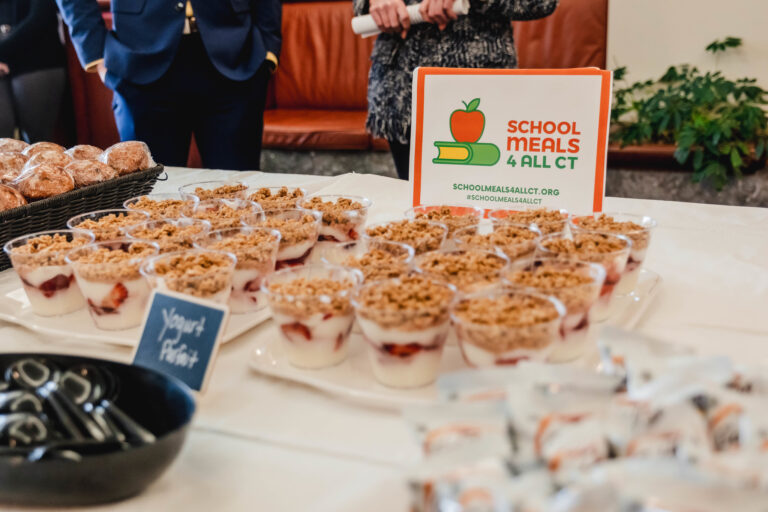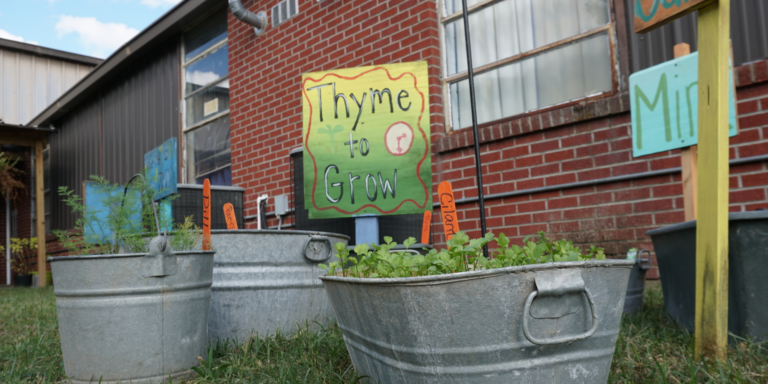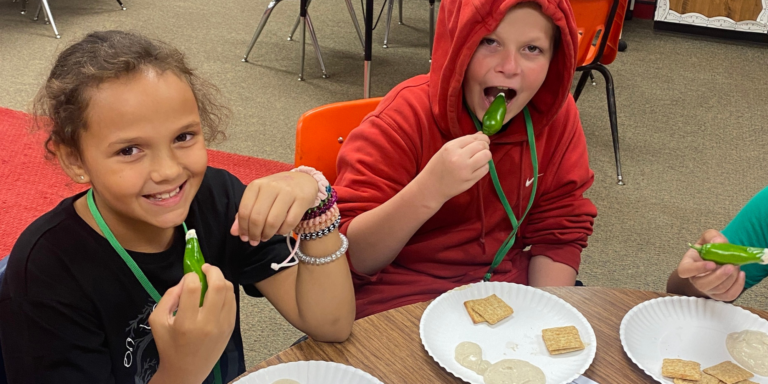Think the Farm Bill doesn’t affect you? Think again. Most people know the Farm Bill as covering agricultural laws and farmer subsidy payments. But it also covers a whole lot more, and impacts everyone who eats in this country—in other words, everyone.
Congress is in the midst of renewing the Farm Bill, which gets updated every five years. Here’s a primer on why you should care and how to get involved in the conversation.
1. The Farm Bill is about so much more than farms.
The farm bill covers a wide range of federal policy, including conservation, nutrition assistance, research, trade, and more. The biggest funding allocation within the farm bill is nutrition assistance in the form of the Supplemental Nutrition Assistance Program, or SNAP, formerly known as food stamps. At FoodCorps, one of our core values is that healthy food has healthy roots. Because the farm bill covers so many areas related to how and what Americans eat, it is a great opportunity for Congress to ensure our food system is equitable and just.
2. SNAP works.
SNAP currently helps one in eight Americans put food on the table. Almost half (44%) of SNAP participants are children. Studies demonstrate that SNAP reduces hunger, lowers health care costs, and has a positive lifetime impact on children. Even so, research shows that SNAP benefits are currently inadequate, delivering only a modest allotment of approximately $1.40 per person per meal.
Myths about who receives SNAP benefits abound. SNAP reaches key vulnerable populations: 78% of SNAP households include a child, an elderly person, or a person with disabilities, and 84% of all SNAP benefits go to such households.
If we believe that all kids deserve the chance to grow up healthy, well nourished, and ready to learn, we need a strong nutrition safety net to help families having a hard time making ends meet.
3. The farm bill also plays a role in school nutrition.
While the majority of school meals policy falls under a separate federal policy process, the child nutrition reauthorization, the farm bill does have an influence on school meals. First, many kids are eligible for free school meals because their household participates in SNAP through a process called direct certification. Proposed cuts to the farm bill would mean millions would no longer be eligible for SNAP (more on that below), cutting access to free school meals for an estimated 265,000 children who rely on the cafeteria for the majority of their daily calories.
If we believe that all kids deserve the chance to grow up healthy, well nourished, and ready to learn, we need a strong nutrition safety net to help families having a hard time making ends meet.
Second, the farm bill covers the Fresh Fruit and Vegetable Program (FFVP). Focused on serving limited-resource elementary schools, the FFVP is a school-based program that provides kids from low-income households with healthy, fresh fruit and vegetable snacks beyond breakfast and lunch time. Because the schools participating in the FFVP often serve families with limited access to healthy, fresh produce, these snacks are often the only fresh produce these children have access to beyond school meals. The FFVP helps FoodCorps service members introduce kids to different varieties of fresh produce and our service members use the program as a tool for hands-on nutrition education.
Unfortunately, some are trying to expand FFVP offerings to include canned, frozen, and dried fruits and vegetables. FoodCorps opposes these efforts: the USDA recently evaluated a pilot program to incorporate canned, frozen, and dried fruits and vegetables into school meals and found that overall consumption of fruits and vegetables dropped; as it turns out, students and parents prefer fresh produce.
4. Congress is working on the farm bill right now.
Both the House and Senate have passed very different versions of the farm bill. Last week, the House narrowly approved its version, which would worsen hunger and nutrition by cutting SNAP for millions of people with low incomes, and also taking hundreds of thousands of kids off of free school meals that provide their daily nourishment. The bill could also undermine the healthy school meal reforms implemented over the past few years and open the FFVP to canned, frozen, and dried products, risking the progress we’ve made to help kids be healthy. This bill would further fail to invest in efforts to develop local and regional food systems, which are critical to connecting schools and kids to healthy food every day.
Meanwhile, just yesterday, the Senate passed an overwhelmingly bipartisan bill that maintains and preserves critical nutrition programs. It’s not perfect, but the bill does include important funding and policy improvements for conservation, local and regional food systems, socially disadvantaged farmers, and more.
One thing is certain: FoodCorps will continue to urge policymakers to reject the House Bill and pass a final bipartisan Farm Bill that protects the health and well-being of our nation’s youth.
What’s next?
As you might remember from your high-school civics class, when the House and Senate pass different versions of a bill, they meet in a “conference committee” to hash out the differences. Given the chasm that exists between the two versions of the bill, it is difficult to predict the outcome of the legislative conference.
One thing is certain: FoodCorps will continue to urge policymakers to reject the House Bill and pass a final bipartisan Farm Bill that protects the health and well-being of our nation’s youth.






